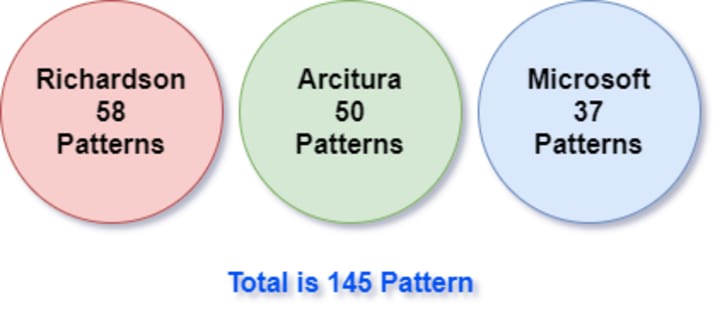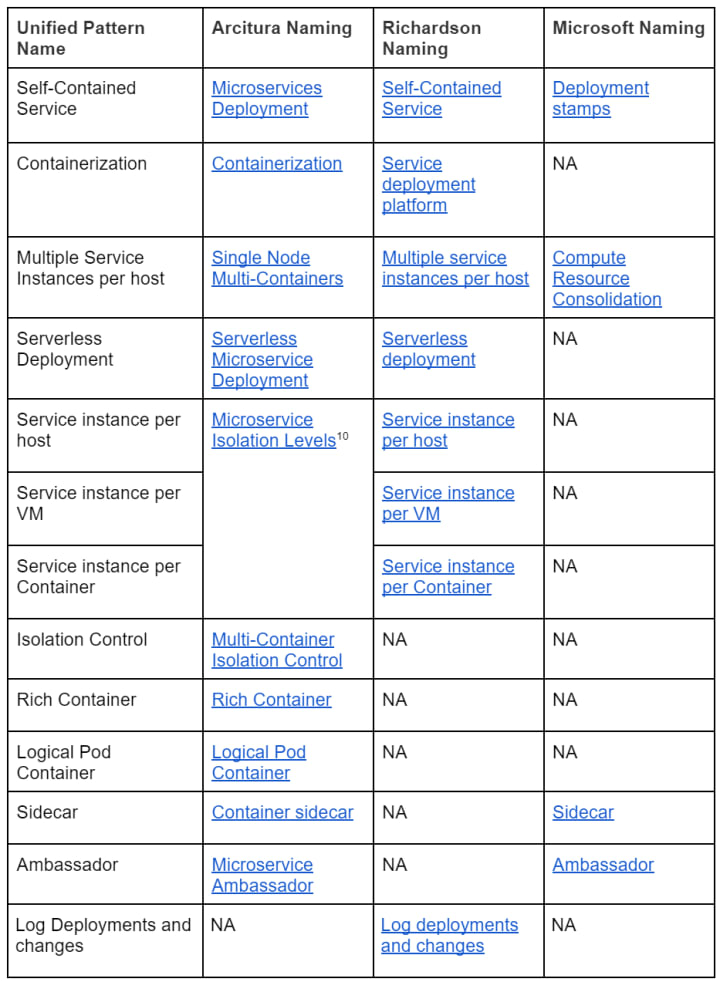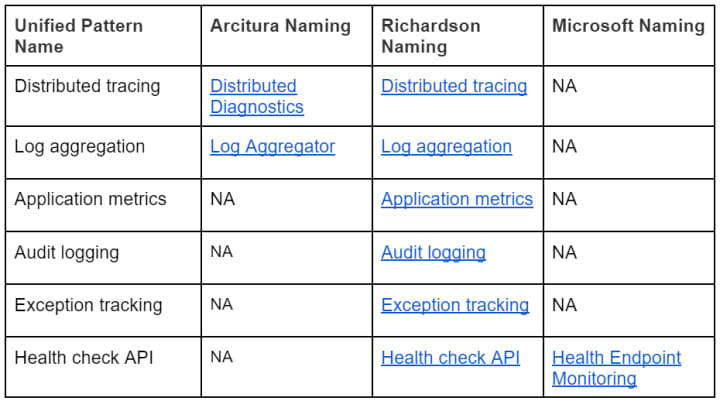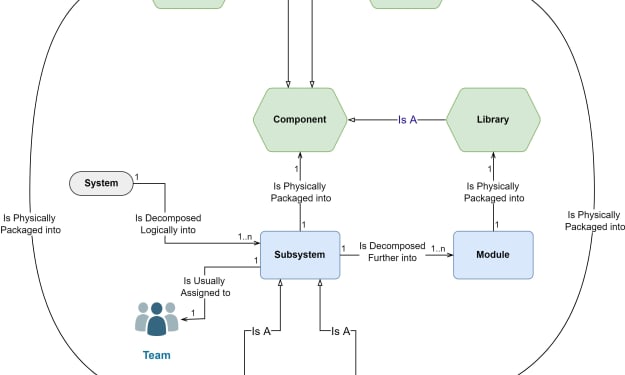Unified Microservices Patterns (UMP)
An index for the unified microservices patterns

Most of us remember the beginnings of the visual modeling era in the 90s where a lot of leaders worked individually to develop their own methods. In that era, things were messy as there was no single universal language for modeling notations which affected negatively the communication, documentation and collaboration between the different teams.
By the end of 90s, three main leaders (Booch, Rumbaugh, Jacobson) have been grouped under a single consortium for the purpose of integrating their methods into a single, unified, de facto standard language for diagramming notations named UML.
Microservices architecture as a style is relatively new, and similar to the beginnings of the visual modeling, a lot of leaders have individually defined the microservices according to their own perspectives. But, unfortunately, the discrete efforts had negative impacts on defining the shape of this style in a unified manner especially the design patterns.
Nowadays, there are mainly 3 different schools for Microservices Patterns; Microsoft, Richardson and Arcitura, introduced cumulatively about 145 patterns, with a lot of differences in the names and details, to provide reusable solutions for the common challenges that we may face while building Microservices Applications; Richardson introduced 58 patterns, Arcitura introduced 50 patterns and Microsoft introduced 37 patterns.

After reviewing the details of the 145 design patterns from the 3 schools, it has been noticed a lot of similarities and intersections between them, although the names in many cases are different. By taking the similarities and intersections into consideration, we were able to come up with 78 unique pattern which we will be listing at the end of this article.

It is worth mentioning that this article is not expecting you to remember the 145 patterns or even the 78 unique patterns (after intersecting them), instead the article aims to:
- Find and match the similar patterns from the different schools and unify them under a single name. This is supposed to provide a common vocabulary and improve the communication.
- Categorize them according to their domains
- Build an index for the consolidated patterns to simplify the allocation for the solutions that address your concerns.
- Invite the main leaders specialized in this field to team up for the purpose of building a Unified Microservices Patterns (UMP).
The unified 78 patterns are organized into 12 categories:
- Utility Patterns (3 Patterns)
- Decomposition Patterns (6 Patterns)
- Data Management Patterns (5 Patterns)
- Communication Patterns (17 Patterns)
- Transaction Management Patterns (5 Patterns)
- Testing Patterns (3 Patterns)
- Deployment Patterns (13 Patterns)
- Service Discovery Patterns (4 Patterns)
- Performance & Reliability Patterns (11 Patterns)
- Security Patterns (2 Patterns)
- Observability Patterns (6 Patterns)
- UI Patterns (3 Patterns)
While browsing the below patterns, you may notice that:
- Arcitura was originally specialized in SOA, that's why many of Arcitura microservices patterns are inherited from Arcitura SOA patterns (14 out of 50 patterns are actually inherited from SOA).
- The 3 schools intersects in 19 patterns, most of them belongs to the communication category
- Arcitura and Microsoft focus more on the Deployment, Performance and Reliability Patterns
- Richardson focuses more on the Development, Testing, Observability and Transaction management patterns.
In the following tables, we will be consolidating the design patterns recognized by the different schools grouped by their categories, taking into consideration the differences in the given names.
Please like the story if you liked it and subscribe to get notified for my new articles and stories
1. Utility Patterns (3 Patterns)
As image:

As Clickable and Scrollable Table (Take sometime to load):
2. Decomposition Patterns (6 Patterns)
As Image:

* Note 1: Inherited from SOA style and patterns
As Clickable and Scrollable Table (Take sometime to load):
3. Data Management Patterns (5 Patterns)
As Image:

As Clickable and Scrollable Table (Take sometime to load):
4. Communication Patterns (17 Patterns)
As Image (Cells merged for better clarity):

* Note 2: Gatekeeper, Gateway Routing and offloading are considered as detailed patterns under API Gateway
* Note 3: In Arcitura, it is limited to sync data between instances of the same microservice, while Richardson pattern is more generic
* Note 4: Competing Consumers, Queue-based load leveling, async request-reply, Pipes and filters, claim check, priority queue and sequential convoy are considered detailed patterns under Async Queuing pattern. Async Queuing Pattern is inherited from SOA patterns
* Note 5: Async Queuing and Publisher/Subscriber are considered detailed patterns under Async Messaging pattern.
* Note 6: Inherited from SOA Patterns
As Clickable and Scrollable Table (Take sometime to load):
5. Transaction Management Patterns (5 Patterns)
As Image (Cells merged for better clarity):

* Note 7: Atomic Event Processing includes Transaction Outbox, Transaction Tailing
* Note 8: Compensating Service Transaction is inherited from SOA patterns
* Note 9: Compensating Transaction and Scheduler Agent Supervisor are detailed patterns under Saga/Compensating Service Transaction.
As Clickable and Scrollable Table (Take sometime to load):
6. Testing Patterns (3 Patterns)
As Image:

As Clickable and Scrollable Table (Take sometime to load):
7. Deployment Patterns (13 Patterns)
As Image (Cells merged for better clarity):

* Note 10: Service instance per host, per VM and per Container are considered as detailed patterns under Isolation Levels pattern
As Clickable and Scrollable Table (Take sometime to load):
8. Service Discovery Patterns (4 Patterns)
As Image (Cells merged for better clarity):

* Note 11: Metadata Centralization pattern is inherited from SOA patterns
* Note 12: Self-Registration and 3rd Party Registration are considered as detailed patterns under Microservice Instance Registration pattern
As Clickable and Scrollable Table (Take sometime to load):
9. Performance & Reliability Patterns (11 Patterns)
As Image:

As Clickable and Scrollable Table (Take sometime to load):
10. Security Patterns (2 Patterns)
As Image (Cells merged for better clarity):

* Note 13: Brokered Authentication pattern covers Access Token pattern and Federated Identity. Brokered Authentication is inherited from SOA
As Clickable and Scrollable Table (Take sometime to load):
11. Observability Patterns (6 Patterns)
As Image:

As Clickable and Scrollable Table (Take sometime to load):
12. UI Patterns (3 Patterns)
As Image:

As Clickable and Scrollable Table (Take sometime to load):
Summary
The following presentation summarizes everything in one place:
Please like the story if you liked it and subscribe to get notified for my new articles and stories
About the Creator
Haitham Raik
I have 20 years of experience in Software development and Software Architecture. In this page, I will share with you topics based on my expertise related to software development and architecture






Comments (1)
Finally found a research that consolidates all the patterns in one place. Thank you